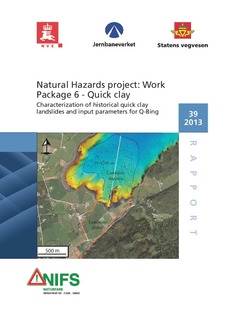| dc.contributor.author | L'Heureux, Jean-Sebastian | |
| dc.date.accessioned | 2013-07-09T07:06:45Z | |
| dc.date.available | 2013-07-09T07:06:45Z | |
| dc.date.issued | 2013-07-09 | |
| dc.identifier.isbn | 978-82-410-0908-2 | |
| dc.identifier.uri | http://hdl.handle.net/11250/189752 | |
| dc.description | R&D project natural Hazards - Infrastructure for flood and slides. | no_NO |
| dc.description.abstract | The post-failure mechanism associated to Norwegian quick clay landslides is a
complex natural phenomenon. An attempt is made in the present study to
characterize the mobility of such landslides on the basis of well-documented cases
and available relationships from laboratory data. Factors affecting mobilization into
flows and run-out distances are discussed. During a landslide the flow behavior can
be quite complex and various types of flow behavior can exist depending on the
clay type, sensitivity, remoulded shear strength, pore-water salinity, mineralogy,
and water content. Results show that the remoulded shear strength in soil
mechanics is similar to values of yield strength in rheology. There is, however, a
large discrepancy between values of viscosity determined empirically from
laboratory data and those obtained from back-calculation of landslide events.
Hence, there is a need for field and laboratory calibration of these models. | no_NO |
| dc.language.iso | eng | no_NO |
| dc.relation.ispartofseries | Rapport / Norges vassdrags- og energidirektorat;39:2013 | |
| dc.subject | Kvikkleire | no_NO |
| dc.subject | Skred | no_NO |
| dc.title | Characterisation of historical quick clay landslides and input parameters for Q-Bing | no_NO |
| dc.type | Research report | no_NO |
| dc.source.pagenumber | 32 s. | no_NO |
